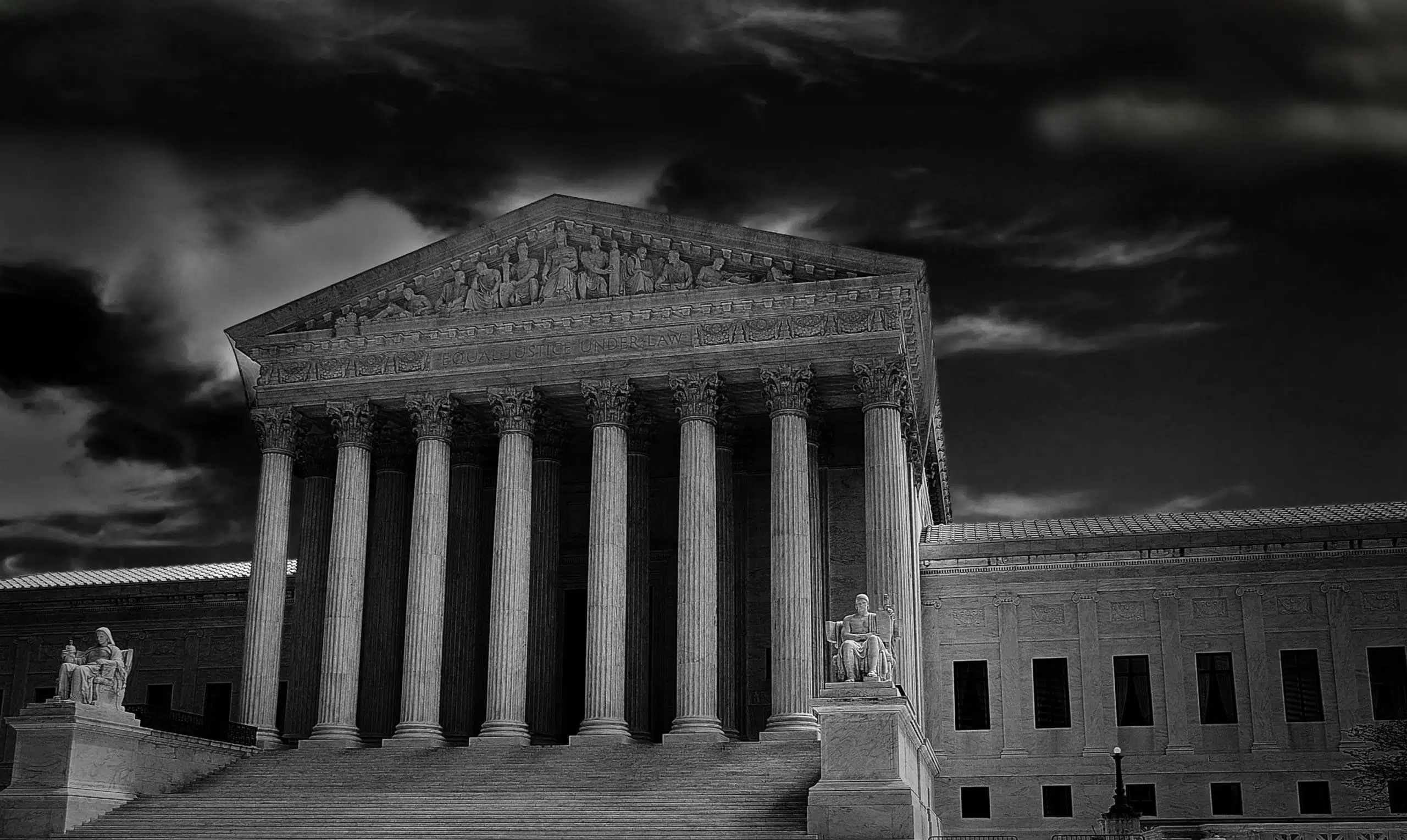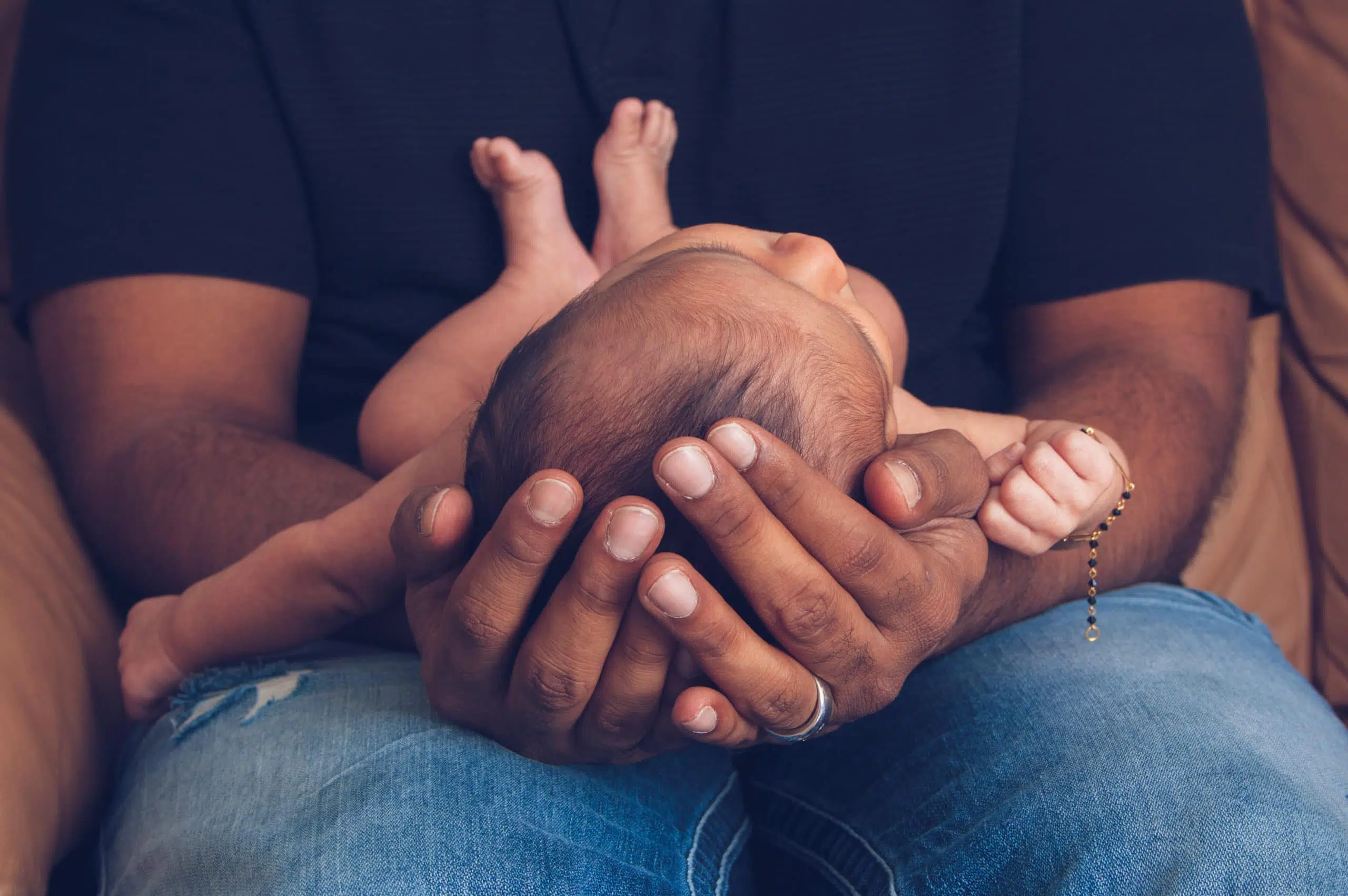Abortion is not a constitutional right according to a direct reading of the text of the Constitution – abortion is never mentioned in the Constitution – and according to the recent ruling in Dobbs v. Jackson by the Supreme Court. In the past, progressives justified the alleged Constitutional under the Fourth Amendment’s protection of privacy, seeing the Constitution as a “living document.”
This “living constitution” argument is often used by pro-abortionists. As former U.S. President Barack Obama once asserted, “I remain committed to protecting a woman’s right to choose and this fundamental constitutional right.”1 Obama, formerly a law professor, obviously must know that this “right” does not actually exist ― the Supreme Court literally conjured it out of thin air in its efforts to justify the most illogical, sloppily written opinion that it has ever produced.
However, as the Supreme Court found on June 24, 2022, this loose interpretation of the Constitution does not hold legal weight. Today, abortion is not protected under the Constitution.
Creating a Constitutional Right to Abortion
In the 1960s, revolution ― especially of the sexual variety ― was in the air. This revolutionary spirit made its way into the Supreme Court. The justices were committed to promoting this “progressive” agenda. In 1973, the Supreme Court ruling in Roe v. Wade showed that their tactic to legalize abortion was to extend the right to privacy beyond its natural and legitimate dimensions.
Of course, we do indeed possess an authentic right to privacy, founded in the Fourth Amendment. This right protects us from, among other things, unreasonable searches and seizures. Others enjoy this genuine right to privacy, including married couples, doctors and patients, attorneys and clients, people engaging in business transactions, and priests and penitents.
But immoral and deadly activities require a manufactured legal cover. As the Gospel of John says, “The light has come into the world, and men loved darkness rather than light, because their deeds were evil. For everyone who does evil hates the light, and does not come to the light, lest his deeds should be exposed” (3:19-20).

“Is Abortion a Constitutional Right?” The Court’s Answer
Eventually, the courts found the perfect segue into creating a right to abortion in Griswold v. Connecticut. The decision in this case overturned a Connecticut law prohibiting the sale or distribution of birth control devices.
The court system of the State of Connecticut correctly believed that the use of contraceptives [1] would eventually lead to the breakdown of the family and the degradation of marriage. In fact, the state’s Supreme Court had already turned back several constitutional challenges to this law. But it could not withstand an activist U.S. Supreme Court, which handed down its Griswold v. Connecticut decision on June 7, 1965.
The majority found that the Connecticut law violated the “right to marital privacy,” which was found in the “penumbras” and “emanations” of other constitutional protections. In other words, they believed this “right to marital privacy” was still protected by the Constitution, though it was not explicitly stated as such. Justice Arthur Goldberg thought that this protection might lie in the Ninth Amendment, and Justice John Marshall Harlan speculated that it might lie in the Due Process Clause of the 14th Amendment.
But nobody was really sure.
In Griswold, Justice Harry Blackmun, who authored Roe v. Wade, wrote:
The Constitution does not explicitly mention any right to privacy. In a line of decisions, however, the Court has recognized that a right of personal privacy … does exist under the Constitution. In varying contexts, the Court or individual Justices have indeed found at least the roots of the right in the First Amendment, Stanley v. Georgia, and in the penumbras of the Bill of Rights.
In his dissent, Justice Potter Stewart wrote, “With all due deference, I can find no such general right of privacy in the Bill of Rights, in any other part of the Constitution, or in any case ever before decided by this Court.”
The stone was rolling. Before 1972, only married couples had the right to purchase and use contraceptives. But in the Eisenstadt v. Baird decision of 1972, the Supreme Court expanded that right to unmarried people. The third word in the “right to marital privacy” quickly disappeared. Soon after, of course, came the January 22, 1973 Roe v. Wade and Doe v. Bolton decisions, which have led to the extermination of nearly one-sixth of the American population under a supposed constitutional right to abortion.
For two centuries in the United States, this “right” was never considered part of the Constitution. Thus, the justices felt pressure to justify changing this norm. They kept falling back on the idea that the right to privacy guaranteed abortion rights. The Legal Times exposed the negligence of the reasoning process of the justices: “Looking back on that argument, [Sarah Weddington] laughs as she recalls that Justice Potter Stewart asked her where in the Constitution she found the “right” to abortion she had so fervently argued. “Any place we find it will be okay with you, right?” Stewart asked Weddington.”2
Since then, the Supreme Court has seen three major cases that changed the way abortion legality is interpreted.

Casey v. Planned Parenthood, Where Abortion was Upheld, But Viability and “Undue Burden” Determined Legality
In 1982, the Pennsylvania Abortion Control Act required that, absent a medical emergency (in which case, none of these requirements would apply), a 24-hour waiting period for women seeking abortions be followed. Abortion facilities were required to give certain information regarding abortion to the woman and wait for 24 hours before performing the abortion. It also required minors to receive parental consent or a judicial bypass before being allowed an abortion. Finally, it required that married women inform their spouses of the abortion beforehand.
A group of Planned Parenthoods in Pennsylvania challenged this law and brought the governor of Pennsylvania, Bob Casey, Sr., to court. In the case of Casey v. Planned Parenthood, the Court decided to uphold Roe v. Wade’s restrictions on abortions pre-viability. However, the point of viability had been moved up after Roe v. Wade. Additionally, abortions performed post-viability were only allowed in situations where the mother’s health or life were at risk. The Court also rejected the “rigid trimester framework” of Roe. Roe was concerned with and focused on trimesters to justify when and how abortions were acceptable and when the government could restrict abortions.
Instead, Casey took a new approach and focused on viability to determine whether an abortion was an option. This case was concerned about whether an abortion law or restriction would place an “undue burden” on the woman seeking an abortion.
Additionally, the parental consent clause was upheld. However, the spousal notification requirement from the Pennsylvania Abortion Control Act was struck down as unconstitutional as it was deemed an “undue burden” on the part of the pregnant mother.3

Essentially, Casey v. Planned Parenthood increased state regulations on abortion, while also upholding the overall decision of Roe v. Wade. It ruled that abortion could not be restricted to the point of imposing an “undue burden” on the woman seeking the abortion.4
This case set a precedent in later cases. The major question in abortion cases after Casey asked whether a given abortion restriction placed an “undue burden” on the pregnant mother.
Whole Women’s Health v. Hellerstedt, Where Medical Benefits Justified an “Undue Burden”
In 2013, Texas passed H.B.2, a bill that required abortion clinics to meet certain standards that were deemed “unreasonable” by the clinics themselves. These standards included a requirement that the attending abortionist have admitting privileges within a 30-mile radius, and that the clinic itself meet the requirements set out for ambulatory surgery centers.
These requirements led to the widespread closure of about half the abortion clinics in Texas, which made abortion access more difficult for women in Texas. Additionally, abortions were banned after 20 weeks under this bill.5
In passing this bill, Texas was following the recommendations of the report of the Grand Jury in Pennsylvania, 2011. This report investigated the case of Kermit Gosnell [2], an abortionist who was charged with three murders and manslaughter. This report called for abortion clinics to follow standards for ambulatory surgical centers.6
Whole Women’s Health sued the state, saying that this law placed an “undue burden” on women in seeking an abortion (which was already considered a Constitutional right, thanks to Roe v. Wade).
The Court ruled that the standards set forth by H.B.2 were unconstitutional. It further set the precedent that the “undue burden” question should be considered in a cost/benefits light.
Namely, it ruled that any abortion ban must be grounded in medical benefits that are sufficient to justify the burden they place.5

Dobbs v. Jackson, Where Roe v. Wade Was Overturned
2022 saw the overturn of Roe v. Wade and a return of abortion law to state discretion. In Dobbs v. Jackson, the Court ruled that abortion is not, in fact, protected under the Constitution – a central argument in Roe v. Wade.
Additionally, the Court explained that abortion is not deeply rooted in history, and, in fact, when the 14th Amendment was established (an Amendment that allegedly protected abortion), abortion at any point during pregnancy was prohibited in three-quarters of the states. Further, the Court recognized that, in giving each individual state the power to decide whether they wanted to legalize abortion in their own constituency, there would be individuals who disagree with the Court’s decision in this case. These individuals would argue that bodily autonomy should guarantee abortion access. The Court thus explained and defended its decision by pointing out that using autonomy as a way to justify abortion would open the door to justifying further evils, such as prostitution or drug use.7
The Illicit “Right” to Privacy Leads to Other Injustices
The paramount damage done by the illicit privacy “right” is to the cardinal virtue of justice, “The moral virtue that consists in the constant and firm will to give their due to God and neighbor” [Catechism, ¶1807].
The best way to determine whether or not an activity should be legal is to determine whether or not it honors justice.
When people claim a “right” to privacy in order to cover illicit and sinful actions, such as abortion, justice always suffers grave damage, because the rights of God and of other persons are simply disregarded. Some examples:
Harvesting Aborted Fetal Tissue
In 2016, the Center for Medical Progress released undercover videos of Planned Parenthood executives. The journalists in the videos were actors posing as employees of organ harvesting companies. Drs. Jennefer Russo and Deborah Nucatola are featured in these videos, where they confirm that their Planned Parenthood clinics are working with biotech companies to transfer harvested fetal body parts from aborted fetuses. Dr. Russo even admitted to changing how she performs the abortion to obtain an intact “specimen,” i.e., a lung, or a heart, or a brain.8

Even CNN, a strong abortion supporter, reported on this issue. They did not deny that Planned Parenthood sells fetal tissue samples or “specimens,” and they even defended the inhumane practice. They only condemned the practice of changing an abortion procedure to procure a specific “specimen.”9
Planned Parenthood later sued [3] the Center for Medical Progress for “[violating] the Racketeer Influence and Corrupt Organizations (RICO) Act; [violating] the federal eavesdropping statute; [engaging] in wire fraud, mail fraud, invasion of privacy, illegal secret recording, and trespassing; and [using] a complex criminal enterprise to defraud Planned Parenthood and prevent it from providing health care.”
Planned Parenthood does, in fact, transfer fetal tissue for research [4] in a program called a “tissue donation program.” However, their defense is that the Statute on Fetal Tissue Transplantation Research of 1993 [5] allows the woman to consent to donating the fetal tissue after an abortion for research purposes. Further, it is illegal to sell fetal tissue for profit [6]. Planned Parenthood says the prices they negotiate when giving biotech companies fetal tissue are not for profit, but rather to cover expenses. This much is, sadly, legal.
Legal or not, and whether they make a profit or not, their bartering of fetal tissue like just another product is a revolting assault against human dignity.
As deceased human beings, these aborted children should receive the respect and care that any deceased human receives, along with burial rights. But priority is given to medical research and advancement, at the cost of human dignity – all in the name of privacy.
Transgenderism in Minors
Hormone “treatment” and transgender surgeries are now available for minors, with the age becoming lower and lower.10 “Therapists” are now threatening parents of transgender-presenting children with an impossible question: “Would you rather have a transgender child, or a dead child?” Their assertion is that, without treatment, their child is at a higher risk of suicide. At the same time, they bemoan the fact that in all of human history, society has only recently begun to accept transgenderism.
Because of this, there are no studies on the long-term effects of transgenderism. The question then becomes – how can they be sure that the child is at higher risk of suicide, if there are no long-term studies to support this claim? How does this justify emotional blackmail? The long-term health effects of hormone “therapy” and surgery on minors is unclear still.11
Many trans activists will assert that hormone therapy and transgender surgeries are never performed on minors. Chloe Cole, a detransitioning young adult who went through a double mastectomy at age 16, would disagree. Of course, it’s all about how privacy awards people the right to do whatever they like with their bodies – and those of their children, too.12

Legalized Prostitution
There is a growing movement to legalize consensual prostitution, calling prostitution a “human right,” arguing that, if it’s the only way the woman knows how to make a living, who are we to stand in her way?13 In reality, prostitution is a degradation of human dignity, and it condones a culture where women are seen as objects of gratification rather than valuable members of society. Legalized prostitution could easily lead to desperate women and girls to enter the industry who otherwise wouldn’t enter it.
There also is an undeniably strong link between prostitution and human trafficking, and if we want to combat trafficking, prostitution must be made illegal. Otherwise, brothels will be exploding with new women and girls, many of whom are not there willingly. It will then be all the harder to leave the industry, as it’s all perfectly legal.14 Once a woman or girl is in prostitution, it is difficult to leave for a myriad of reasons, including drug or alcohol addiction, coercion, or having this be the only way they know to make a living.15 Additionally, if it’s the only way she knows to make a living, does it make it truly consensual? According to some, yes, and all in the name of privacy.
Every American cherishes his privacy. Everyone believes that “a man’s home is his castle,” and almost everyone wants the government to interfere with his private life as infrequently as possible while still maintaining society’s fabric.
Since Americans value the concepts of “privacy,” “freedom” and “choice,” anti-lifers illegitimately extend them to cover their own behavior. Thus, they label any opposition to abortion, homosexual acts, euthanasia, and other abuses “intrusive,” “anti-freedom,” and “anti-choice.”
In the case of abortion, the right to privacy does not mean the right to any medical procedure desired.
Takeaways
Pro-lifers and other pro-family activists must understand the legal protection of human life. Abortion is not a Constitutional right. The argument that abortion falls under “privacy rights” opens the door to other unspeakable injustices, such as harvesting fetal tissues, transgenderism in minors, legalized prostitution, and other hideous sins and crimes.
Those who are activists for the protection of life should not feel guilty for opposing these, and other, injustices. After all, anti-lifers simply use the “right” to privacy as an excuse to legally kill other human beings.
The 2022 overturn of Roe v. Wade is the beginning of a return to our true Constitutional values. Abortion was never guaranteed under the Constitution. Pro-lifers should continue to work for the legal protection of human life and dignity, taking great hope from the results of Dobbs v. Jackson.
This article was originally published by Brian Clowes in May 2012 and most recently updated by Marisa Cantu in April 2023.
+ Endnotes
[1] Obama, Barack. “Statement by the President on Roe v. Wade Anniversary.” National Archives and Records Administration, January 22, 2012. https://obamawhitehouse.archives.gov/the-press-office/2012/01/22/statement-president-roe-v-wade-anniversary.
[2] Legal Times, March 4, 1985, page A35.
[3] “Planned Parenthood of Southeastern Pennsylvania v. Casey (1992).” Legal Information Institute. Legal Information Institute. Accessed April 6, 2023. https://www.law.cornell.edu/wex/planned_parenthood_of_southeastern_pennsylvania_v_casey_(1992) [7].
[4] Taddonio, Patrice. “Documentaries Offer Context as Supreme Court Overturns Roe v Wade.” PBS. Public Broadcasting Service, June 24, 2022. https://www.pbs.org/wgbh/frontline/article/supreme-court-overturned-roe-v-wade-documentaries/.
[5] “Whole Woman’s Health v. Hellerstedt.” Oyez. Accessed April 6, 2023. https://www.oyez.org/cases/2015/15-274.
[6] Report of the XXIII Grand Jury in the Court of Common Pleas, First Judicial District of Pennsylvania, Criminal Trial Division, No. 0009901-2008, page 16.
[7] Newton, Craig. “Dobbs v. Jackson Women’s Health Organization (2022).” Legal Information Institute. Legal Information Institute, February 22, 2023. https://www.law.cornell.edu/wex/dobbs_v._jackson_women’s_health_organization_(2022).
[8] Planned Parenthood OC Changes Abortions to Harvest Intact Fetuses for Local Company’s Sales. YouTube. YouTube, 2016. https://www.youtube.com/watch?v=Bwn0QBhy2TQ.
CMP launched multiple undercover videos. More videos can be found here: Investigative Footage – The Center for Medical Progress [8]
[9] Almasy, Steve, and Eliott C. McLaughlin. “Planned Parenthood Exec, Fetal Body Parts Subject of Controversial Video.” CNN. Cable News Network, July 15, 2015. https://www.cnn.com/2015/07/15/health/planned-parenthood-undercover-video/index.html.
[10] Tanner, Lindsey. “Trans Kids’ Treatment Can Start Younger, New Guidelines Say.” AP NEWS. Associated Press, June 15, 2022. https://apnews.com/article/gender-transition-treatment-guidelines-9dbe54f670a3a0f5f2831c2bf14f9bbb.
[11] Terhune, Chad, Robin Respaut, and Michelle Conlin. “As Children Line up at Gender Clinics, Families Confront Many Unknowns.” Reuters. Thomson Reuters, October 6, 2022. https://www.reuters.com/investigates/special-report/usa-transyouth-care/.
[12] Heipel, Edie. “Meet the 18-Year-Old Leading the Fight to Protect Children from Transgender Surgeries.” Catholic News Agency. Catholic News Agency, April 5, 2023. https://www.catholicnewsagency.com/news/252376/chloe-cole-leading-fight-to-protect-children-from-transgender-surgeries.
[13] “Sex Workers’ Rights Are Human Rights.” Amnesty International, October 11, 2021. https://www.amnesty.org/en/latest/news/2015/08/sex-workers-rights-are-human-rights/.
[14]“Legal Prostitution and Human Trafficking in the Netherlands.” European Centre for Law and Justice, April 26, 2022. https://eclj.org/geopolitics/eu/legal-prostitution-and-human-trafficking-in-the-netherlands.
[15] “Leaving Prostitution.” WomensLaw.org, October 10, 2017. https://www.womenslaw.org/about-abuse/forms-abuse/sexual-abuse-and-exploitation/prostitution/leaving-prostitution [9].